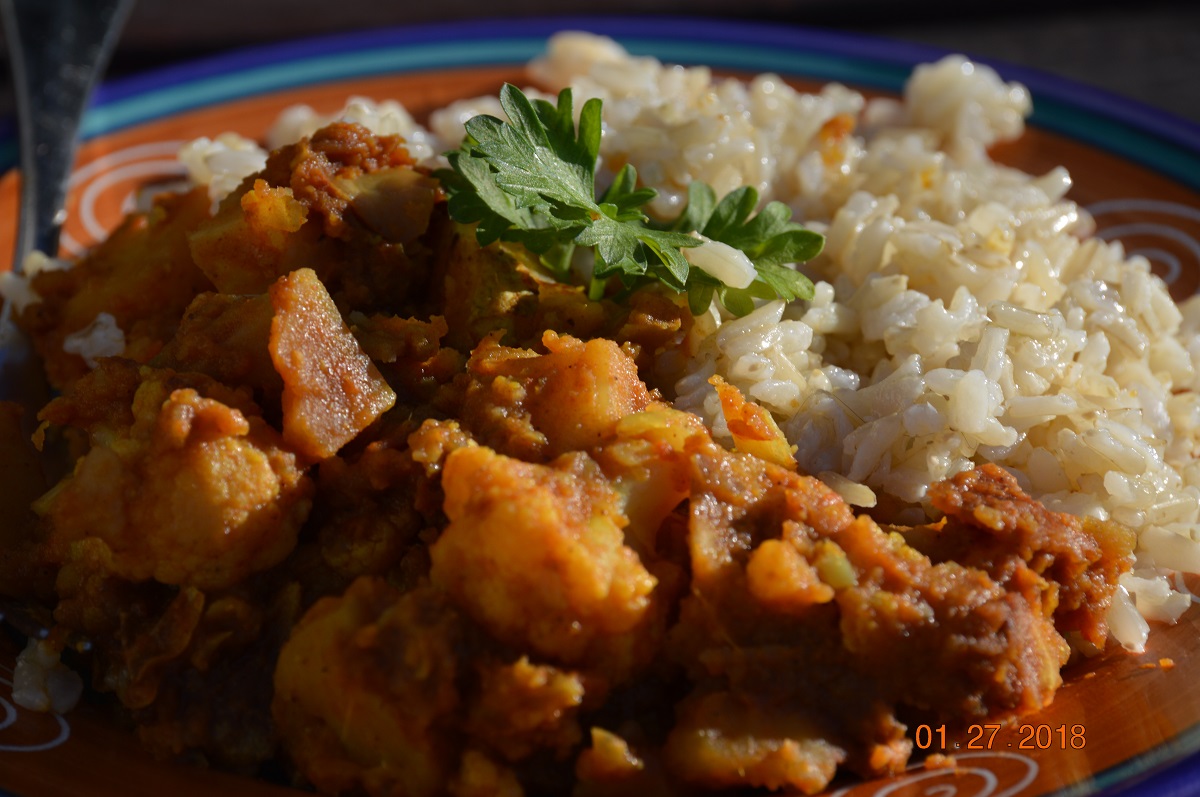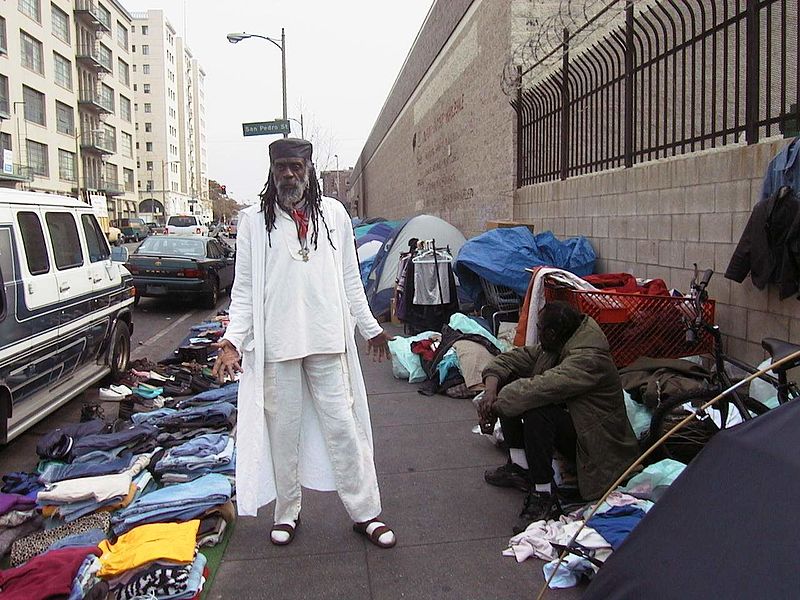I began my Torah Ecology project with this pair of Torah portions a year ago shortly after and because of the election of Donald Trump to the presidency. I mention that because today is one day after Trump once again showed us his deformed values in a particularly vulgar way with his comments about Nigeria and Haiti.
In my opinion, this pair of portions speaks directly to the Sitz im Leben in which we find ourselves in the United States today, inching toward destruction of the planet, of ourselves as a nation, of our neighbors and of other creatures who share the planet with us. The root of that destruction is our own failure to create a just and compassionate society, and for me, this president, while not wholly responsible for that failure, symbolizes it.
My project focuses on relationships — between ha-Aretz (the land), ha-Shamayim (the heavens) and ha-Yamim (the seas), that is, the environment, and all that lives in the environment. It also deals with relationships between human beings, bein Adam l’havero — and with how those relationships impact both the environment and other life in it.
In a sense, in the biblical story, these earthly relationships come to take precedence over the connection bein Adam la-Makom (between human beings and G-d) — if only because failed relationships within creation indicate a failed relationship with Transcendence.
The biblical story looks toward the creation of a just and compassionate society. To the extent that is not effected, rain will not fall, and crops will not grow. Ultimately the land will “vomit out” its inhabitants. Other life on the planet succeeds and fails as human beings succeed and fail, and success and failure is measured by the extent to which human societies establish justice and are compassionate toward their most vulnerable.
The Torah develops the theme of the intimate relationship between how human beings act in the world and with each other in society and how those relationships impact the environment and the animal world. It explores these relationships with a repeating motif of creation, destruction/rollbacks of creation, new creation. Human beings, according to the biblical text, have always had the ability to create a fertile, beautiful world with enough for all — or to bring about a catastrophic destruction to the society filled with violence and corruption. The destruction drags all with it, the innocent, including the animals, and the righteous. The theme of creation, destruction/rollbacks of creation, new creation repeats throughout the biblical text.
This pair of Torah portions captures that motif in the Ten Plagues, which stretch across two portions, Vaera and Bo. I engaged in an initial probe into the structure and the meaning of these portions when I worked them through last year. I made progress but wasn’t fully satisfied. I made more progress this year but am still not fully satisfied. I did add some thoughts, though, after I tested out different structuring mechanisms and focused more closely on what I’m calling the “Animals’ Story.”
Because there are so many references to animals in the course of the 10 Plagues story, I won’t recount them here. I charted them for my own reference while I continue to consider the details of my chart. Here’s an abridged version below. In Part II of this post, “The Animals’ Story,” I’ll list any additional animal references in Bo that follow the 10 Plagues account.
PROLOGUE (Ex 7:1-13) – snake
PLAGUES
- (Ex 7:14-24) – blood pollutes rivers, fish die
- (Ex 7:25-8:11) – frogs pollute land until karet, cut off from the land
- (Ex 8:12-15) – dust of earth turns to lice; affects “man and beast”
- (Ex 8:16-28) – insect swarms ruin the land; affect people
- (Ex 9:1-7) – pestilence kills domesticated animals
- (Ex 9:8-12) – soot from kiln becomes dust, causes boils; affects “man and beast”
- (Ex 9:13-35) – Hail destroys land, “man and beast” die, herbs of field, trees killed
- (Ex 10:1-20) – Locusts kill every remaining green thing, herbs, fruit of trees, trees; cannot see the land
- (Ex 10:21-29) – Darkness so deep it can be touched; one person can’t see another next to him for three days; when Pharaoh prevaricates, Moses says “not one hoof” will remain behind
- (Ex 11:1-10, 12:29-42) – Death of firstborn of Egyptians, specifically includes their animals – even the Egyptian gods are destroyed. Blood on doorposts & lintel of Israelite homes protects and preserves life
EPILOGUE (Ex 12:1-28) – Eat unleavened bread for seven days (lest they are karet, cut off from their community)
Here are the things that seem suggestive to me so far:
- The 10 Plagues segment is filled with allusions to the creation story in Genesis, Chapter 1. Secondarily, it assumes the Flood story of Genesis, Chapters 6-9 with its motif of creation, destruction/rollbacks of creation, new creation from a saving remnant.
- The Prologue and Epilogue set the creation story backdrop with the reference to the snake at one end and to seven days at the other end.
- The first plague and the tenth plague bracket the story with references to blood, with the paradoxical dual valence it usually has in the biblical text: it pollutes (the Nile and kills the fish), and it protects and preserves life (when it is spread on the doorposts and lintel of Israelite homes).
- The 10 Plagues represent a sequential rollback of creation, beginning from the water, moving on to the land, from there to the vegetation and life on the land. The land is hidden from view by the locusts as it was hidden from view by the waters before G-d gathered them into seas. Then people are no longer visible to one another as a primordial darkness settles over them, a darkness so thick they could touch it. The story returns the world of the Egyptians to the tohu va-vohu (darkness and emptiness) of the second verse of Genesis. Finally, the Egyptian future is erased in the death of the firstborn. Even their gods are destroyed in the Epilogue (Ex 12:12).
- As one cosmos dissolves, one creation rolls back, another is created. As the plagues roll back the world of the Egyptians to a primordial darkness and emptiness, the Israelites emerge in a new creation passing through a seven-day event (parallel to creation), the feast of unleavened bread.
The 10 Plagues is a structured and allusive story, and the dual-valenced blood framing of the prologue and epilogue points to the structure.
In my last analysis of these portions, I tried dividing the plagues into groups of three, capped with the 10th and final plague. This time the bracket suggested by the blood imagery persuaded me to look for a chiastic structure. I’m not sure that I can demonstrate that — yet. I’m also intrigued with pairs — #2 and #5, #3 and #6, #4 and #7, #5 and #8, #6 and #9. It was the “man and beast” of the third and sixth plagues that raised this possibility for me. The fourth and seventh plagues are also suggestive, with land destroyed in the fourth and everything on it (vegetation, and again, “man and beast”) in the seventh, similar to the creation story in which land is created then filled with vegetation.
Whatever details continue to reveal themselves as I study, the creation, destruction/rollbacks of creation, new creation motif is critical for my own understanding of the text and its application to our time.
The idea that one sphere impacts other spheres so catastrophically resonates with me, the idea that an absence of justice and compassion in human society creates deformities in the environment and ultimately brings destruction to all living creatures describes what I see today. This interpretation allows me to identify with another time and another culture, giving me a glimpse of the universality of human experience, of the interconnectedness of all being and of the imperative for justice in all our interconnected relationships.
THE ANIMALS’ STORY
In the course of the 10 Plagues, the human story is linked most closely to the land animals’ story. Whereas water creatures like fish and frogs pollute the land after their environment is disrupted, and insects and locusts and lice attack “both man and beast,” the livestock (behemah, beast) don’t turn on their human masters (ish, man), nor do the human masters do any damage to their livestock unless disbelief causes them (the Egyptians) not to protect their animals when they are warned. In fact, the land animals suffer with their humans (the Egyptians – Ex. 12:29) and are saved with their humans (the Israelites – Ex. 12:32, 38). While they may no longer have a “seat at the spiritual table,” they are, at least, in the room.
This special connection between human beings and other land animals is consistent with the rest of the biblical presentation. In Gen. 1:29, we read: “29 And God said: ‘Behold, I have given you every herb yielding seed, which is upon the face of all the earth, and every tree, in which is the fruit of a tree yielding seed–to you it shall be for food…30 and to every beast of the earth, and to every fowl of the air, and to every thing that creepeth upon the earth, wherein there is a living soul, [I have given] every green herb for food.'” Beasts of the earth are second to humans in the list of those who receive the vegan dietary prescription. Fish are missing. Humans converse with the snake in the Garden, not with fowl of the air or creeping things. When the whale swallows Jonah, the fish and the human don’t have a conversation.
Humans and land animals intimately share a habitat and a spiritual destiny.
There are only three remaining animal references in the Vaera-Bo portions, in Ex 12:43-13:16. The first two relate to the Law of the Passover offering:
Ex. 13:1 – “The Lord spoke further to Moses, saying, ‘Consecrate to Me every first-born; man and beast, the first issue of every womb among the Israelites is Mine.'”
Ex. 13:12-13 “…you shall set apart for the Lord every first issue of the womb; every male firstling that your cattle drop shall be the Lord’s. But every firstling ass you shall redeem with a sheep; if you do not redeem it, you must break its neck. And you must redeem every first-born male among your children.”
Ex. 13:15 -“When, in time to come, your son asks you, saying, ‘What does this mean?’ you shall say to him, ‘When Pharaoh stubbornly refused to let us go, the Lord slew every firstborn in the land of Egypt, the first-born of both man and beast. Therefore I sacrifice to the Lord every first male issue of the womb, but redeem every first-born among my sons.'”
We see two themes of relationship in these verses: the intimate connection between human beings and other land animals, the way they share both habitat and spiritual destiny, and the priority of human beings in the economy of creation that exacts a price for life. An animal forfeits its life for the sake of human beings. This, too, like the creation-destruction/rollback of creation/new creation motif is a universal experience with which we can all connect. Animals dying so humans can live returns me to the Starting Thought of my blog:
“This thought occurs to me about meals: as we gather raw ingredients, prepare food and eat, we embrace the central moral paradox of human existence, that it requires taking life to sustain life. How we respond to that paradox defines us as human beings.
“As we journey through our lives, we both eat and nourish, destroy and enrich. The great gift we have as human beings is that we can make conscious decisions about the balance of eating and nourishing, taking and giving, in our own lives. The challenge is to remain fully aware, making conscious choices on each step of our journey.”







